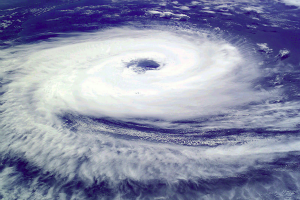 As you probably already know, El Niño is on its way. It’s been in the news quite a bit since August, when scientists first announced that we were due for a very wet winter. Since that time they’ve determined that it’s pretty much guaranteed at this point. Within the next few weeks, the West Coast is going to be inundated with record breaking rain storms that could rival the El Niño season of 1997. And despite the disastrous possibilities of this weather pattern, Americans living on the West Coast are pretty excited about finally receiving some heavy rain after several years of severe drought.
As you probably already know, El Niño is on its way. It’s been in the news quite a bit since August, when scientists first announced that we were due for a very wet winter. Since that time they’ve determined that it’s pretty much guaranteed at this point. Within the next few weeks, the West Coast is going to be inundated with record breaking rain storms that could rival the El Niño season of 1997. And despite the disastrous possibilities of this weather pattern, Americans living on the West Coast are pretty excited about finally receiving some heavy rain after several years of severe drought.
However, these people may be counting their chickens a little too soon. All they’re thinking about is the torrential El Niño that is imminent, and they’re forgetting the La Niña that often follows right after. Typically, the La Niña has an almost equal and opposite effect of the El Niño, which means that we’re only going to have a very brief respite from the drought.
However, there is another consequence of this year’s El Nino that is virtually a sure thing to happen within the next half year. A very rapid change in El Nino water temperatures will follow – in nine months we will have gone 180 degrees in the opposite direction and we will be dealing with a very strong La Nina.
The following plots the changes from El Nino (red) to La Nina (blue). Note the rapid change that occurred from November of 1997 to the fall of 1998. A very big La Nina followed the record El Nino:
The numbers:
A chart of the 1998 event:
As you can see, a heavy El Niño is often followed by a very drawn out La Niña. That means we’ll probably have horrendous drought conditions for another few years after this rainy season concludes, which will be felt in the Southwest and the Midwest. This could easily result in a major crunch in the food supply of the United States, and the rest of the world. According to Bloomberg:
The current El Nino, forecast to be the strongest since 1997-98, will weaken by spring, potentially giving way to La Nina, according to MDA. In the 1983-84 marketing year, when U.S. farmers planted corn under El Nino conditions before La Nina developed during the crop’s growing and maturing phases, production fell by almost half, according to the U.S. Department of Agriculture and an Oct. 26 report by Citigroup Inc.
And keep in mind that the real issue at hand here, isn’t the length or frequency of these weather cycles, it’s their severity. Between a third and a half of the seasons we experience are either coinciding with El Niño or with La Niña at any given time, and they don’t usually lead to any remarkable conditions. However, since this cycle is going to be so extreme, it means that the entire world is going to have a lot of problems over the next few years.
Just as both of these weather patterns have an inverse relationship, the kinds of damage they cause varies wildly across the world. Rain in one country means drought in another. Those countries may then experience the exact opposite of these extremes once El Niño shifts into La Niña.
Essentially what we’re looking at is several years of devastating floods and crippling droughts all across the planet. While we often think of this weather pattern in localized terms, the severity of this particular cycle now carries a few geopolitical implications. There will be more natural disasters, which means there will be more disease outbreaks and food shortages, which means there may also be more wars and revolutions.
In other words, the next few years are going to be nuts.
Will it be the end of the world? Hardly. But it’s definitely something you should be preparing for.
This article was originally published at Ready Nutrition™ on November 20th, 2015









I live in California. The weather here is already 100% manipulated – The 2+ year Drought is designer weather, well documented on The HAARP Report channel on Yootoob. We’ll get the rain They want us to get. They’re now warning about the “devastating” El Nino coming up. I assume that means they will bring us massive flooding like they do everywhere in the “developing” world. Then more drought. We should be grateful that we’re not (yet) getting tsunami’s like the people in Japan…
Great satire, Kudos!
Its global warming, no wait, cooling, no wait, its the hole in the Ozone, no, climate change. We need to take all the wealth in the USA and give it all away to appease the weather gods. Oh and sacrifice a few virgins, if we can find any.